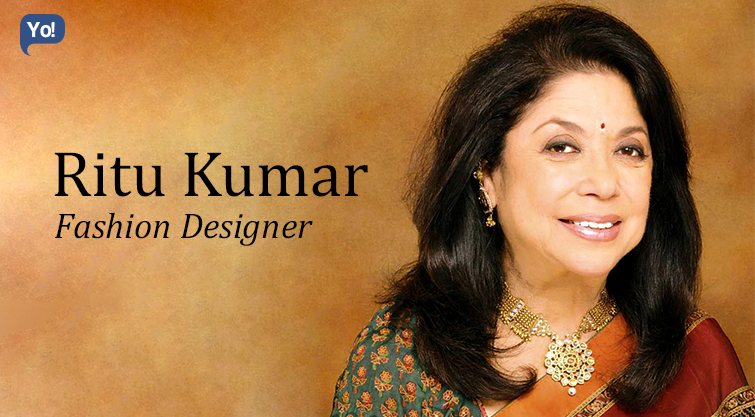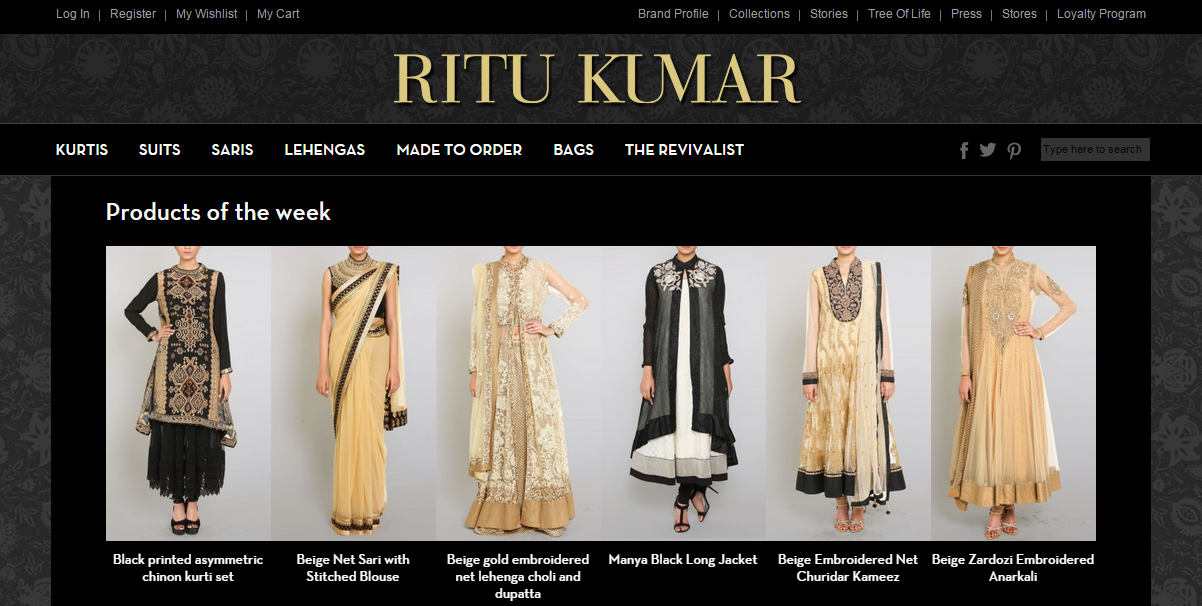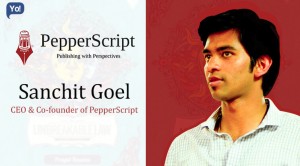Ritu KumarLife in the shoes of the Fashion Designer – Ritu Kumar! Published On: Thursday, July 23, 2015 Views 25267

Like most of us already know – Ritu Kumar is an Indian fashion designer. But what many are still unaware is that, she also happens to be the pioneer of the Organized & Boutique-cultured Fashion Industry in India. Currently, she runs three Labels – ‘Ritu Kumar’, ‘Ri’ and ‘LABEL Ritu Kumar.
Today, with 35 stores across the world, Ritu Kumar’s designs have gone on to become the definition of Fashion and is also worn by many of the Bollywood & International celebrities like Vidya Balan, Aishwarya Rai, Priyanka Chopra, Lara Dutta, Dia Mirza along with Mischa Barton, Anoushka Shankar and Anna Ivanovic as well.
Additionally, since over two decades, Ritu Kumar’s name has also got attached to the Femina Miss India for designing clothes for their contestants who participate in international beauty pageants such as Miss Universe, Miss World and Miss Asia Pacific World. But more than all that, her designs have also been patronized by style symbols such as Late Princess Diana and Jemima Khan.
Ritu Kumar is the mother of Ashvin Kumar, the youngest Indian writer/director to be nominated for an Academy Award and Amrish Kumar, who is the founder of their Label.
Lastly, when she is not working, she prefers to go on a family vacations or just have deep conversations with her sons over art and books.
How Was Her Early Life Like?
Born on the 11th of November 1944 in Amritsar, Ritu came from a middle class family of ideals and values. But unlike the rest of the family from those days, her family had more open minded views.
Unlike most of the parents of the 60s era, parents and grandparents being highly educated, believed that educating their daughter was of utmost importance. The choice of her career was also left upon her wishes. She was given complete freedom & independence, to pursue whatever she felt was best for her.
She completed her graduation from Lady Irwin College in 1964, and went on to pursue her higher education in Theatre and History of Art from Briarcliff College, New York, USA in 1966.
Soon after that, she decided to return to India, to realise that how little she knew about Indian art and heritage. Hence to gain more understanding and knowledge of the same, she enrolled herself in Ashutosh Museum of Indian Art to study museology, after which she also got married in Kolkata (then Calcutta).
While she was in the beginning phases of her career, she discovered different types of dying embroideries and prints. This was a world she had never seen before.
During that era, she was one of those very few who had got the opportunity to study and travel abroad, and to see the depth of the craft and design heritage of their own country. To add to that, Ritu was turned out to be one of those rare gems, who happened to notice that India was a reservoir of delicate skills.
She wanted to merge her international experience together with the skills, roots and identity of her country. Her idea was to take the Indian creativity out in the world in such a way both – craftsmen and modern consumer benefited out of it.
Now 60s was the time when, as Ritu likes to put it – India was going through deep changes, it was trying to find its space in the world at least in terms of art; plastics were replacing mud, brass was replacing silver; handicrafts being replaced by factory produced papers or woods, and age-old cotton & silk getting replaced by nylons.
Basically, India was on the cusp of modernization, in its own sweet way. That is when Ritu saw something missing in the society, which changed her life for good!
Life In The Shoes Of Ritu Kumar
Phase I
Now even though Ritu had studied art and museology, but her career into textiles happened to her by sheer accident.
While she was at it, she came across a village called Serampore. Serampore was a former Dutch colony on the outskirts of Calcutta, whose home-grown art of printing had been brutally wiped out by the British.
She noticed that there still was a lot of talent which lied in the small village, which highly lacked opportunities. Only if they had a retail space around, or a driving force that could spread the word about the delicacy of the place, it would have created wonders, not just for the village, but would also have greatly benefited the investors as well. This caught her eye, and she decided to do something about it.
Having said that; in 1969, with just four hand block printers and two tables, she changed her career path altogether and started her own brand.
Her first set of sarees were pure accident!
Anyway, soon things began to fall in place, and one fine day when she thought that enough was produced, Ritu held her first exhibition at the Park Hotel in Calcutta. This event turned out to become a huge success and it not only boosted the confidence of those poor villagers, but also opened doors to multiple other opportunities as a whole.
Soon after that she also went on to take another jump, and opened her first small retail space. And with that, Ritu Kumar also became the first woman to introduce the ‘boutique’ culture in India under the brand name ‘Ritu’.
Phase II
She used to travel across the world and used to visit museums to find printing blocks and used to pass them on to the workers to try them out.
In the early 70s, during her travels Ritu happened to discover embroiders of Ranihati, who were based outside Calcutta. She provided them with a workspace in their own environment and began selling their craft. This craft was none other than Zardozi, which once was owned by Mughal emperors. She revived it to produce bridal outfits and evening wear and in doing so, she evolved a unique blend of pattern, fabric and gold embroidery.
Another good thing about her area of work was that, since the whole idea was built on the support of craftsmen, it also created huge opportunities of employment in the underdeveloped areas.
Now that the business was growing slowly but steadily, she brought in a team to help her to run the show effectively.
Her team was her family. Ritu’s husband used to help her make the business commercially successful with his business background, while her children used to accompany her to all the sites she visited, just to be together.
As much as humble the beginning was, equally challenging were the days ahead. Success indeed came to her, but it came to her after immense struggles!
The British rule in India had scrambled and destroyed the art in the country from its roots. Because of that, all books, museums, history which could be used as reference material were gone! All she could do now is learn while on the go.
One of the greatest early day’s challenges that she faced was during her third exhibition of sarees, which was held in Uttar Pradesh and centred around its blocks and prints. To her shock, she managed to sell only two sarees that too to her friends, who bought them out of sympathy.
Later she realised that the failure of the exhibition was because she had put the prints on khadi, which made the sarees bulky. But the wise one that she was, turned the problem into an opportunity to learn how to combine fabrics and prints.
Another grave problem she faced was that, back in those days, being in fashion itself was a huge challenge. The market was completely closed for imports and we mean in literal sense. Basically, they were disconnected from the outer world and were forced to go back to their roots.
But beyond all that; she was way ahead of her times, and the audience itself wasn’t mature enough for such a concept, let alone be availability of the necessary resources. She even received a lot of criticism for her works.
What kept her from not stopping were our home-grown culture and the richness of Indian textiles. It was only after a gradual amount of time, that her works started getting appreciation.

Phase III
Now that she was an established Fashion Designer, Ritu Kumar in 1999 also went on to write a book called “Costumes and Textiles of Royal India”. The book was about a narration of the history of India’s royal textile arts, which went back to the days of Mohenjo Daro.
The country was now seen to be drastically changing and Ritu wanted to capitalize on the opportunity. Hence, in an attempt to do so, she began to bring her specialized design collection into the main stream and also focused more on the younger generation. While at it, she also designed costumes for a few films, high profile stars such as Aishwarya Rai, Priyanka Chopra, Sushmita Sen, Diana Hayden, Diya Mirza, Lara Dutta, Tanushree Dutta, Neha Dhupia, Celina Jaitley, etc.
In addition to that, she also tied up with the Femina Miss India Pageant to design the wardrobes of the winners to participate in the other International Beauty Pageants like Miss Universe, Miss World, etc.
In 2002, Ritu Kumar joined hands with her son Amrish, and launched a sub brand under her wing called – Ritu Kumar, ‘LABEL’.
The USP of LABEL was that it uses their established forte of traditional Indian designs and transforms them into something on the lines of international fashion and targeted the young global Indian woman with a modern lifestyle.
Soon after that, Ritu Kumar as a brand branched out their reach to the luxury segment and launched the fragrance named ‘the tree of life’.
After a year or so, Ritu founded “All India Artisans and Craft Workers Welfare Association” (AIACA), along with Pritam Singh (Anokhi), Laila Tyabji (Dastkar), Madhukar Khera and Fabindia.
Recently, Ritu Kumar the brand, raised Rs.100 Cr. from Everstone, a leading India and South East Asia private equity investor, for an undisclosed minority stake.
And talking about their current position in the market; since their initiation the brand Ritu Kumar has gone on to expand to 35 stores globally. Today, under Ritika Pvt. Ltd. they have two main production centers in Gurgaon and Calcutta, which are equipped with in-house printing, tailoring, finishing and quality control facilities. The company also runs the show and sells their franchise retail outlets under the label RITU KUMAR.
Starting at such a small level, Ritu Kumar has certainly grown on to diversify her works of art globally and has also turned out to become a mentor to the fashion industry in India.
Her Achievements!
- Received the “Padma Shri Award”, India’s 4th highest civilian award, for her exceptional and distinguished service in the field of fashion, textile and craftsmanship (2013)
- Received the “Indira Gandhi Priyadarshini Award” for her achievements and contribution in the field of fashion
- Earned the “Chevalier des arts et des lettres” (knight of the order of arts and letters) by the French government for her contribution to Indian textile crafts, and traditional techniques
- Received the “Delhi Women of the Decade Achievers Award” for Excellence in Fashion Retail by the ASSOCHAM Ladies League (2013)
- Received the “Achievement Award” at the L’oreal Paris Femina Women’s Awards (2012)
- Received “The Outstanding Women Entrepreneur Award” by the PHD – Chamber of Commerce (1998)















